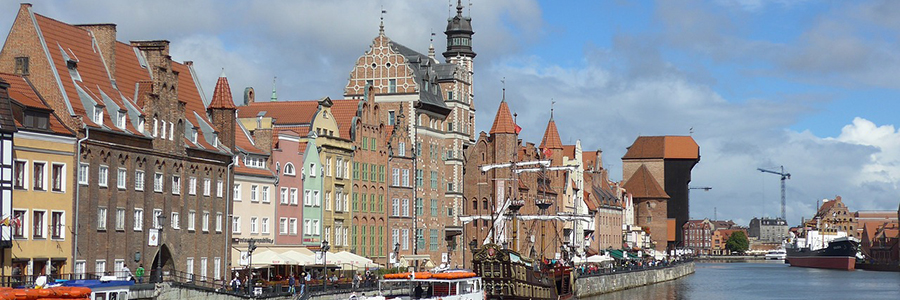Danzig – “The Tin Drum” and the culture of remembrance

In its complex city history, Danzig was under Polish, Prussian and German rule, often interrupted by autonomy and periods as a free city-state. In the early Middle Ages, Gdansk was part of the Polish crown.
In the interwar period, not least because of its multi-ethnic composition and history, Gdansk was claimed by Germany and Poland, which caused tensions due to its location in the so-called Polish Corridor.
Together with the port city of Gdynia (Gdynia) and the seaside resort Sopot (Sopot) Danzig forms the so-called Trójmiasto (Tricity) with more than 740,000 inhabitants. More than 1.2 million people live in the entire urban Gdansk agglomeration (Aglomeracja gdańska).
The early stories of Nobel Prize winner Günter Grass, who was born in Langühr in 1927, are set in the city. In the novel “The Tin Drum” he summarized the history of Danzig as follows: “First came the Rugians, then came the Goths and Gepids, then the Kashubians, from whom Oskar is a direct descendant. Soon afterwards the Poles sent Adalbert of Prague. He came with the cross and was killed with an ax by Kashubians or Pruzzes. […] This happened in a fishing village and the village was called Gyddanyzc. Gydannyzc became Danczik, Danczik became Dantzig, which later became Danzig, and today Danzig is called Gdańsk.”
The culture of remembrance is shaped by museums. Their disunity is reflected, among other things, in the museum concepts of the Muzeum II Wojny Światowej and the Westerplatte Museum for the commemoration of the Second World War, which started in Gdansk, and are based on different political currents and historical teachings. Against the backdrop of the Polish Corridor, Donald Tusk considers his hometown of Danzig to be the central problem in German-Polish relations.
Gdansk is the starting point of the EuroVelo 9 cycle route (Baltic Sea-Adriatic Route or Amber Route, Polish Szlak bursztynowy), which leads from Gdansk through Poland, the Czech Republic, Austria and Slovenia to Pula in Croatia. The EuroVelo 10 (Baltic Sea Cycle Path or Hanseatic Route, Polish Obwód Hanzeatycki), which is built around the Baltic Sea, also runs through Gdansk.
Es gibt keine Beiträge in dieser Kategorie. Wenn Unterkategorien angezeigt werden, können diese aber Beiträge enthalten.